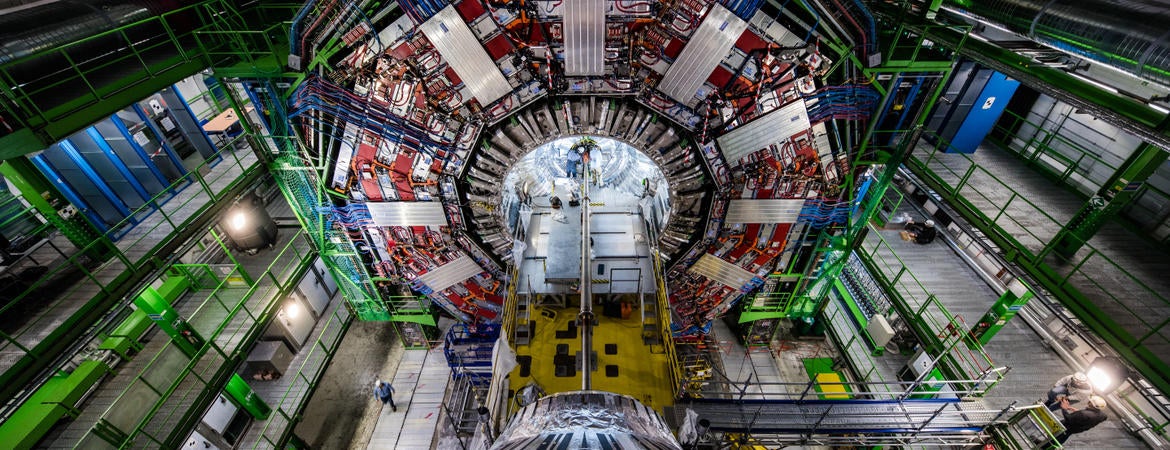
The Standard Model of particle physics is the best explanation to date for how the universe works at the subnuclear level and has helped explain, correctly, the elementary particles and forces between them. But the model is incomplete, requiring “extensions” to address its shortfalls.
Owen Long, a professor of physics and astronomy at the University of California, Riverside, is a key member of an international team of scientists that has explored supersymmetry, or SUSY, as an extension of the Standard Model. He is also a member of the Compact Muon Solenoid, or CMS, Collaboration at the Large Hadron Collider at CERN in Geneva. CMS is one of CERN’s large particle-capturing detectors.
“The data from our CMS experiments do not allow us to claim we have found SUSY,” Long said. “But in science, not finding something — a null result — can also be exciting.”
A theory of physics beyond the Standard Model, SUSY refers to the symmetry between two kinds of elementary particles, bosons and fermions, and is tied to their spins. SUSY proposes that all known fundamental particles have heavier, supersymmetric counterparts, with each supersymmetric partner differing from its Standard Model counterpart by one-half unit in spin. This doubles the number of particle types in nature, allowing many new interactions between the regular particles and new SUSY particles.
“This is a big change to the Standard Model,” Long said. “The extension can provide answers to some of the fundamental questions that are still unanswered, such as: What is dark matter?”
The Standard Model explains neither gravity nor dark matter. But in the case of the latter, SUSY does offer a candidate in the form of the lightest supersymmetric particle, which is stable, electrically neutral, and weakly interacting. The invocation of SUSY also naturally explains the small mass of the Higgs boson.
“The discovery of the elusive SUSY particles would provide an extraordinary insight into the nature of reality,” Long said. “And it would be a revolutionary moment in physics for experimentalists and theorists.”
At CMS, Long and other scientists hoped to find evidence for SUSY particles by examining signs of their decay as measured by an energy imbalance called missing transverse energy. When they examined the data, they found no signs of the expected energy imbalance from producing SUSY particles.
“We, therefore, have no evidence for SUSY,” Long said. “But perhaps SUSY is there, and it is just more hidden than initially thought. It’s true we did not find something new, which is disappointing. But it is still very important scientific progress. We now know a lot more about where SUSY does not exist. Our null result motivates us to do follow-up work and guides us where to look next.”
Long explained that he and his fellow scientists have been looking for SUSY for a long time through a technique based on a connection to dark matter.
“Those efforts did not find SUSY particles,” he said. “Our new result involves a completely different approach, developed over a couple of years and driven by our interest in looking for SUSY in novel ways. While we found no evidence for SUSY, there is still interest in exploring the idea that SUSY could exist in ways that are more difficult to find. We already have preliminary measurements we are working on.”
Long was funded by a grant from the Department of Energy. He was joined by three other senior scientists from other institutions in the research.
UCR is a founding member of the CMS experiment — one of only five U.S. institutions with that distinction.
The research paper is titled “Search for top squarks in final states with two top quarks and several light-flavor jets in proton-proton collisions at s√= 13 TeV.” Available here as a preprint, it has been submitted to the journal Physical Review D.
Header image credit: CERN.




